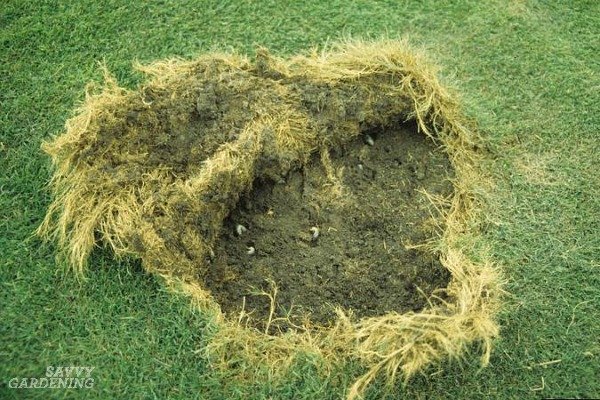
So, what exactly are grub worms? These are the larvae of various beetles, and while they might look harmless, they can wreak havoc on your lawn and garden. Picture them like the uninvited party crashers that munch away at your carefully tended plants. Understanding the relationship between moisture and grub activity is crucial if you want your green space to thrive.
Let’s chat about how overwatering can impact your garden and what you can do to keep those grubs at bay.
Understanding Grub Worms and Their Life Cycle
Before we dive into the nitty-gritty of overwatering, let’s take a moment to understand the little critters we’re dealing with. Grub worms are primarily the larvae of beetles—common culprits include Japanese beetles and June bugs. Their life cycle is fascinating, and understanding it can help clarify their behavior.
Life Stages: Grub worms start as eggs laid in your soil. After hatching, they enter the larval stage, which is when they start eating away at your plant roots. This stage can last all summer, so if you see yellowing patches in your lawn, it might be an indication that these little guys are munching below the surface.
Habitat: Grubs thrive in moist environments. They prefer areas where the soil is loose and easy to burrow into, which is often aided by excessive watering. You might be thinking, “So, if I water less, will I keep them away?” Let me explain further.
How Overwatering Affects Soil Conditions
Now that we know what grubs are, it’s time to explore how *overwatering* impacts the soil they inhabit. You may think that more water means healthier plants, but that’s not always the case.
When you overwater, the soil can become saturated. This means it can’t hold oxygen as well, creating a perfect environment for grubs. Think of it like a sponge that’s too wet—when it’s completely soaked, it can’t absorb any more water. In this case, the oxygen levels dip, and the soil becomes a cozy little home for grubs and other pests.
Moreover, overwatering can lead to other issues like root rot, which weakens plants and makes them more vulnerable to pest attack. It’s a double whammy! So while you might have good intentions, it’s essential to monitor your watering habits.
Identifying Signs of Grub Infestation
Now, how can you tell if those pesky grubs have moved in? Recognizing the signs early can save your garden from a lot of damage.
Yellowing Grass: One of the first signs of a grub problem is brown or yellow patches in your lawn. If you’ve noticed these spots that don’t seem to bounce back, it’s time to investigate.
Loose Turf: Another indicator is when the grass feels spongy or easy to pull back from the soil. This might mean that grubs are munching on the roots, leaving the grass without a strong anchor.
Animal Activity: If your lawn has been invaded by birds, raccoons, or skunks, they might be looking for a snack! These animals dig around in the soil to feast on grubs, which can lead to further damage to your garden.
Watering Techniques to Prevent Grub Infestation
Let’s get practical. If overwatering encourages grub worm activity, what can you do to promote a healthier environment for your plants? Here are some *smart watering tips*:
- Deep Watering: Instead of frequent light watering, try giving your plants a good soak less often. This encourages deep root growth and makes them more resilient.
- Check Soil Moisture: Before watering, check the soil about an inch deep. If it feels moist, it’s probably best to hold off.
- Adjust Your Schedule: Water early in the morning or late in the evening to minimize evaporation and ensure your plants absorb what they need.
By following these practices, you’ll not only keep your plants happy but also create an environment that’s less inviting for grubs.
Natural Solutions to Control Grub Worms
If you’ve already got grubs taking over, don’t fret! There are several natural methods to help control their population without resorting to harsh chemicals.
Nematodes: These tiny roundworms are a natural enemy to grubs. When introduced into the soil, they seek out and infect grubs, helping to reduce their numbers. It’s like sending in a covert operation to eliminate the invaders.
Beneficial Insects: Encourage beetles and other beneficial insects that prey on grubs. Creating a diverse ecosystem in your garden can drastically improve health and balance.
Homemade Solutions: Some gardeners swear by homemade sprays using soap or essential oils. These can deter grubs and other pests while being friendly to the environment.
When to Seek Professional Help
Sometimes, despite your best efforts, grubs can still take hold. If you’ve tried natural methods and still see signs of damage, it might be time to consider professional help. Local garden centers or pest control services can provide you with tailored solutions.
When choosing a professional, look for those who prioritize eco-friendly methods. You don’t want to harm your garden while trying to save it!
So, does overwatering encourage grub worm activity? The answer is a resounding *yes*! Too much water can create the perfect breeding ground for these unwanted guests while weakening your plants. By adopting smart watering practices and keeping an eye out for the signs of infestation, you can help your garden thrive.
Remember, every plant and garden is unique, and finding the right balance takes time. Don’t hesitate to experiment with different methods and consult with professionals when needed. In the end, your hard work will pay off, resulting in a vibrant, healthy garden without the unwelcome invasion of grubs. Happy gardening!
